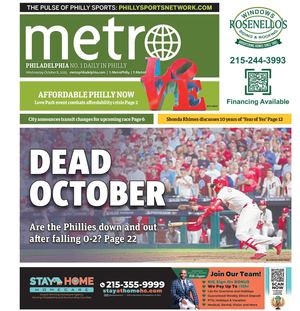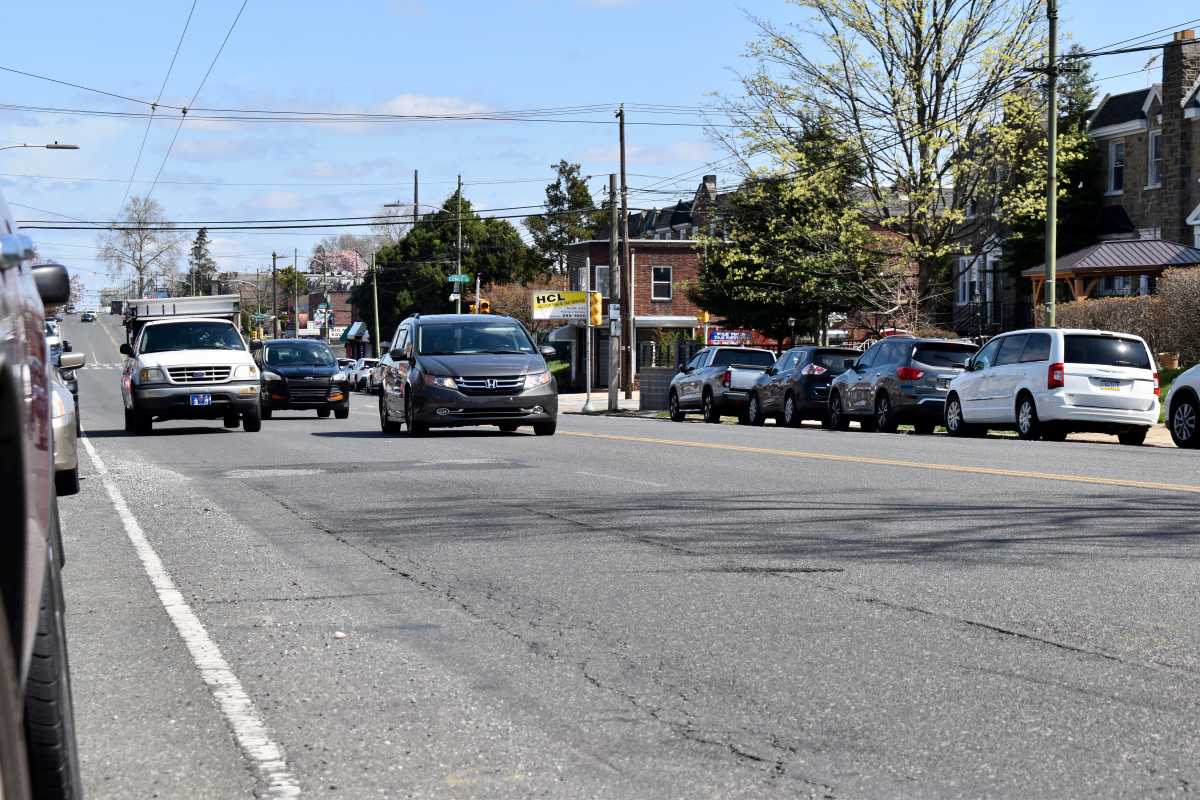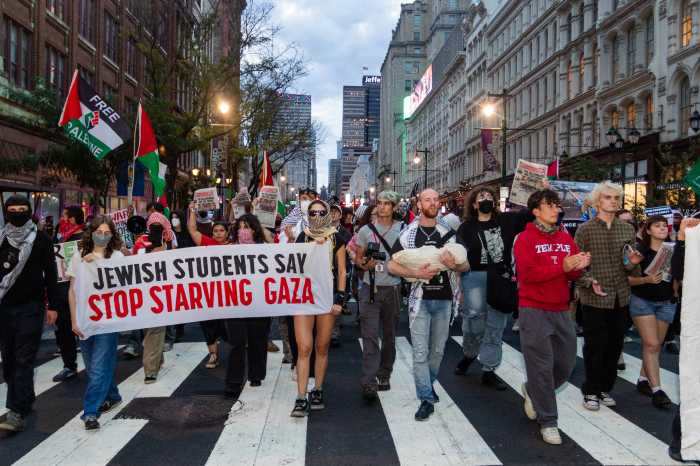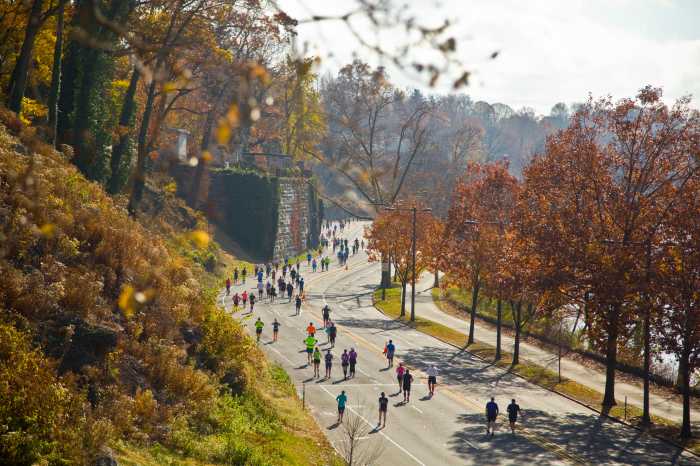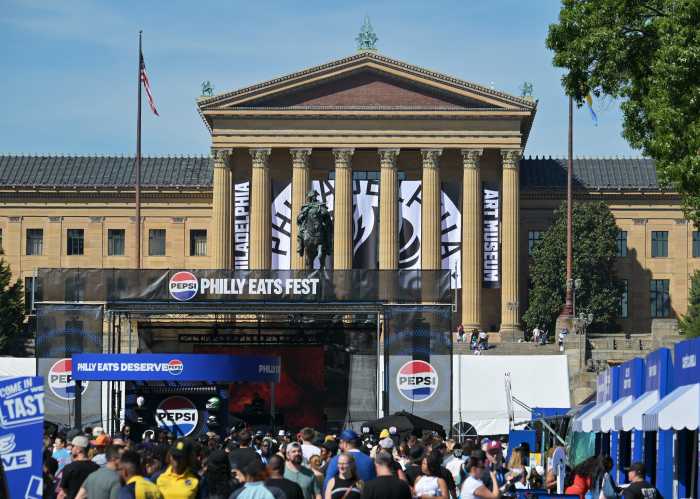A billboard high above a commercial building in Rhawnhurst declares to passing drivers that Castor Avenue is “not broken” and directs them to a website, SaveCastorAve.org.
Take Back Your Neighborhood, a group of residents based in Oxford Circle and Castor Gardens, fundraised thousands of dollars to pay for the advertisement, a rare step for an all-volunteer registered community organization opposed to a street redesign.
The Pennsylvania Department of Transportation and the city’s Office of Transportation and Infrastructure Systems, along with some elected officials, believe Castor Avenue is broken and dangerous.
PennDOT is proposing a “road diet” for the street, reducing the number of travel lanes along a 1.7-mile stretch between Oxford Circle and Cottman Avenue. Instead of two lanes in each direction, there would be one lane each way and a center turning lane.

In addition to the diet, the multimillion-dollar project incorporates a raised parking-protected bicycle lane and boarding islands for a heavily-used SEPTA trackless trolley route. Plans for sidewalk repairs, enhanced lighting, improved traffic signals, trees and planters enjoy near unanimous support.
“It seems that in order to get 90% of it, we have to agree to the 10% which is the road diet,” Pam Baranackie, a TBYN board member, told Metro.
“Nobody understands what the positives are,” Robert Rudnitsky, the group’s president, added. “And everybody’s saying, why are we doing this to a road that’s 100 years old, and there’s no issues?”
Petitions in favor of the design have also circulated and been promoted by 5th Square, the urbanist political action committee.
Divide over ‘road diets’
The Castor debate is emblematic of a broader divide between state and local transportation officials and neighborhood civic associations – often dominated by longtime residents – over road diets.
Perhaps the most widely-publicized example of the phenomenon in the city occurred on Washington Avenue in South Philadelphia. Following nearly a decade of deliberation, the road was repaved in 2022, with differing layouts dictated by the philosophies of separate district City Council members.
Federal data shows road diets result in an average reduction in crashes of between 19% and 47%, and the realignment is recommended for streets with daily traffic of 25,000 vehicles or less, according to a PennDOT and city presentation.
Castor Avenue, which includes a variety of businesses reflecting the area’s diverse immigrant communities, falls well below that threshold, with between 13,000 and 16,000 cars passing through on an average day, the agencies said.
Five people were killed and 15 were seriously injured in crashes in the project area between 2018 and 2022 – a “huge number” for a neighborhood commercial corridor, said Andrew Simpson, complete streets district manager for OTIS. The stretch is part of Philadelphia’s High Injury Network, the 12% of city streets that account for 80% of serious collisions.
Ashwin Patel, PennDOT’s project manager, and Simpson said the danger stems from a lack of left-turn lanes, which prompts drivers to weave between lanes; aggressive maneuvers; and speeding. Simpson said Castor has “fundamental layout issues” that would be remedied through a road diet.

Rudnitsky and Baranackie worry the lane reduction will create congestion and incentivize drivers to utilize parallel residential roads, such as Loretto Avenue and Large Street. Similar concerns were raised by neighbors during the Washington Avenue saga.
PennDOT projects that the diet would add less than 40 seconds to a vehicular trip between Cottman and Oxford Circle, where Castor connects with Roosevelt Boulevard, even during the busiest periods of the day.
The 5-to-3 lane conversion on Washington Avenue between 12th and 4th streets has had no impact on travel times, according to transportation officials.
Moreover, PennDOT and OTIS believe drivers would still use Castor because it will continue to be faster than nearby streets, where the majority of intersections feature four-way stop signs.
Representatives from the departments say they have been meeting with business owners to determine delivery windows in an attempt to install loading zones and reduce the impact of double-parking.
Safety concerns
Conversations about the Castor project date back at least five years. PennDOT came forward to propose safety-related changes, and state Rep. Jared Solomon said he pushed to broaden the scope of the project to include the additional elements.
“This is Jared’s project,” Rudnitsky said. “Why does one person have a single say without the entire legacy of the neighborhood being able to weigh in on the topic?”
Solomon told Metro that “everyone is entitled to their opinion… but people aren’t entitled to their own facts.
“People are dying. That is a call to do better,” he added. “No one should have to deal with a loved one that loses their life because we haven’t done the very best to improve safety. I know change is hard. But if change means a greener, a brighter, a cleaner, a safer, a more secure Castor Avenue, I’m going to do that and say yes every single time.”
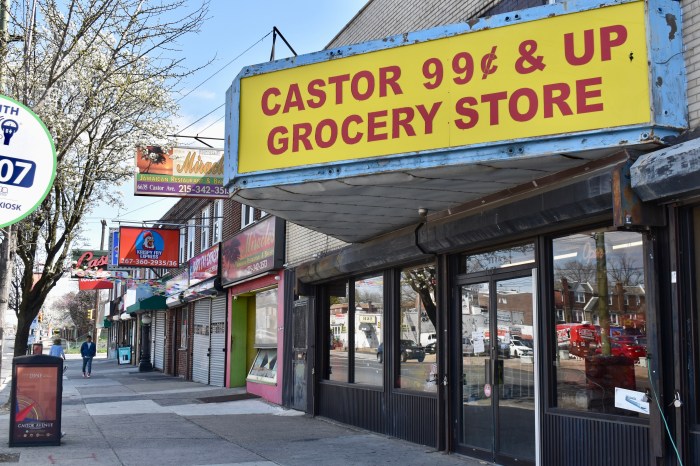
More than 500 people responded to a survey about the redesign this past fall, and support for the road diet was lower among residents who attended a community meeting at Solis-Cohen Elementary, according to information provided by PennDOT.
Opinions about the plan were more positive among those reached through other means. Simpson said officials conducted door-to-door canvassing; posted the survey online; and even distributed it to students at nearby Northeast High School.
Still, TBYN members say they have encountered many business owners and residents who know nothing about the proposal – they bought the billboard to raise awareness.
In response to multiple rounds of community feedback, PennDOT and the city decided to remove a concrete median that was originally included in the proposal.
Patel said the project remains in the preliminary engineering phase. A more detailed cost estimate will come once the scope of work is finalized, though the total price tag is expected to exceed $10 million.
Federal money has been allocated to the effort; however, more funding is still needed and will be sought further along in the process, Patel told Metro.
Decisions will be made in the coming months, and PennDOT and city representatives are planning to meet with the community again this spring, though no date has been set, officials said.
Council legislation permitting the lane reduction and installation of a bike lane is also required for the project to move forward.
“We’re asking for transparency,” Rudnitsky said. “If the change has to occur, allow the neighborhood to vote in, weigh in, and discuss it as a neighborhood.”
